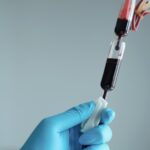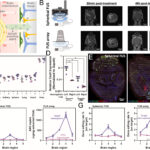2023-09-13 ロイヤルメルボルン工科大学(RMIT)
◆RMIT大学と南オーストラリア大学(UniSA)による新しい研究では、黒リンベースのナノテクノロジーが感染症治療と傷の治癒に効果的であることが示されました。このナノテクノロジーは、生物学的モデルで他の細胞に損傷を与えずに、細菌の99%以上を殺すことに成功し、感染を除去し、傷の治癒を促進することができました。
◆この黒リンベースのナノテクノロジーは、医療機器やプラスチック、ゲルなどの一般的な材料に統合できる革新であり、抗微生物作用を提供し、感染の脅威が除去された後に自己分解するという特徴があります。これにより、新しい抗生物質に頼らない治療法の開発が可能となり、抗生物質耐性の問題に対抗できる可能性があります。
<関連情報>
- https://www.rmit.edu.au/news/all-news/2023/sep/antibacterial-nano-tech
- https://onlinelibrary.wiley.com/doi/10.1002/adtp.202300235
- https://pubs.acs.org/doi/10.1021/acsami.1c01739
層状黒リンナノフレークが細菌負担を軽減し、マウス感染創傷の治癒を促進する Layered Black Phosphorus Nanoflakes Reduce Bacterial Burden and Enhance Healing of Murine Infected Wounds
Emmeline P. Virgo, Hanif Haidari, Zo L. Shaw, Louisa Z. Y. Huang, Tahlia L. Kennewell, Luke Smith, Taimur Ahmed, Saffron J. Bryant, Gordon S. Howarth, Sumeet Walia, Allison J. Cowin, Aaron Elbourne, Zlatko Kopecki
Advanced Therapeutics Published: 10 August 2023
DOI:https://doi.org/10.1002/adtp.202300235

Abstract
Current treatment modalities of cutaneous wound infections are largely ineffective, attributed to the increasing burden of antimicrobial resistance. S. aureus, a commonly wound-associated pathogen continues to pose a clinical challenge, suggesting that new alternative therapeutic materials are urgently required to provide optimal treatment. A layered allotrope of phosphorus termed Black Phosphorus nanoflakes (BPNFs) has emerged as a potential alternative antibacterial material. However, wider deployment of this material requires extensive biological validation using the latest pre-clinical models to understand its role in wound management. Here, the antibacterial potential of BPNFs against wound pathogens demonstrates over 99% killing efficiency at ambient conditions, while remaining non-toxic to mammalian skin cells. In addition, in vivo validation of BPNFs using a preclinical model of S. aureus acute wound infection demonstrates that daily topical application significantly reduces infection (3-log reduction) comparable to ciprofloxacin antibiotic control. Furthermore, the application of BPNFs also accelerates wound closure, increases wound re-epithelization, and reduces tissue inflammation compared to controls, suggesting a potential role in alleviating the current challenges of infected cutaneous wounds. For the first time, this study demonstrates the potential role of BPNFs in ambient light conditions for clearing a clinically relevant wound infection with favorable wound healing properties.
広域スペクトル無溶媒層状黒リン迅速作用抗菌剤として Broad-Spectrum Solvent-free Layered Black Phosphorus as a Rapid Action Antimicrobial
Z. L. Shaw, Sruthi Kuriakose, Samuel Cheeseman, Edwin L. H. Mayes, Alishiya Murali, Zay Yar Oo, Taimur Ahmed, Nhiem Tran, Kylie Boyce, James Chapman, Christopher F. McConville, Russell J. Crawford, Patrick D. Taylor, Andrew J. Christofferson, Vi Khanh Truong, Michelle J. S. Spencer, Aaron Elbourne*, and Sumeet Walia
ACS Applide Materials & Interfaces Published:April 12, 2021
DOI:https://doi.org/10.1021/acsami.1c01739
Abstract

Antimicrobial resistance has rendered many conventional therapeutic measures, such as antibiotics, ineffective. This makes the treatment of infections from pathogenic micro-organisms a major growing health, social, and economic challenge. Recently, nanomaterials, including two-dimensional (2D) materials, have attracted scientific interest as potential antimicrobial agents. Many of these studies, however, rely on the input of activation energy and lack real-world utility. In this work, we present the broad-spectrum antimicrobial activity of few-layered black phosphorus (BP) at nanogram concentrations. This property arises from the unique ability of layered BP to produce reactive oxygen species, which we harness to create this unique functionality. BP is shown to be highly antimicrobial toward susceptible and resistant bacteria and fungal species. To establish cytotoxicity with mammalian cells, we showed that both L929 mouse and BJ-5TA human fibroblasts were metabolically unaffected by the presence of BP. Finally, we demonstrate the practical utility of this approach, whereby medically relevant surfaces are imparted with antimicrobial properties via functionalization with few-layer BP. Given the self-degrading properties of BP, this study demonstrates a viable and practical pathway for the deployment of novel low-dimensional materials as antimicrobial agents without compromising the composition or nature of the coated substrate.


